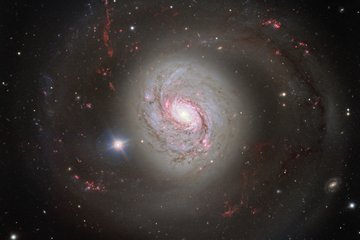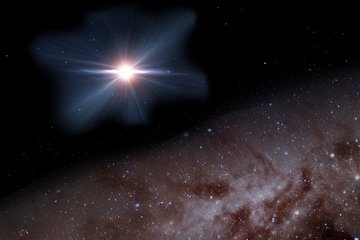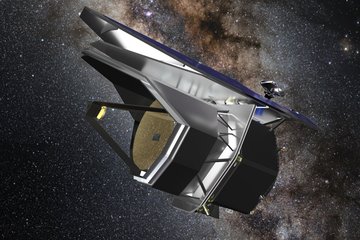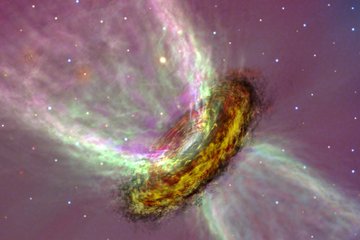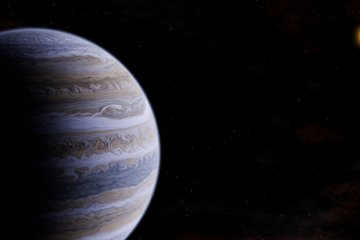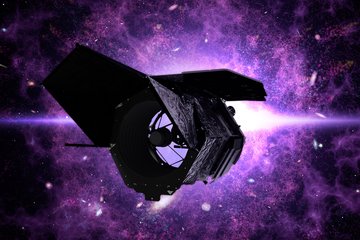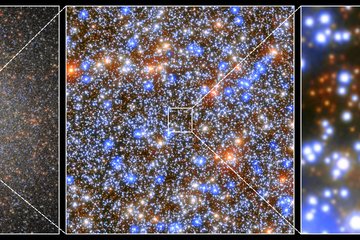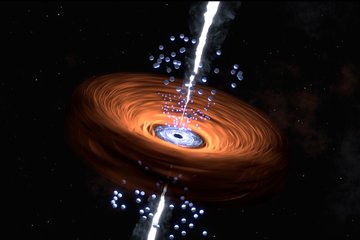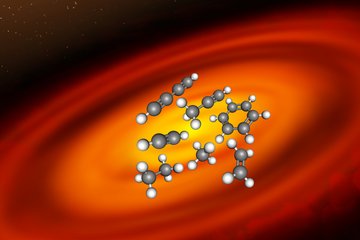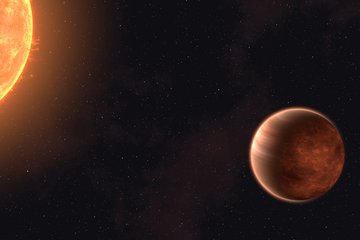Peering inside the birthplaces of planets orbiting the smallest stars
Astronomers detect ring structures in the planet forming disks of young, very low-mass stars.
Scientists have been finding ring-like structures indicating planet formation in the disks surrounding young Sun-like stars for several years. Astronomers led by Nicolas Kurtovic from the Max Planck Institute for Astronomy in Heidelberg, Germany, have now detected similar signals in disks of young very low-mass stars that are considerably smaller and less massive than their counterparts. Although these stars represent the vast majority of the stellar population, they only host 10% of the known exoplanets to date, including terrestrial and Jupiter-like planets. While theorists have yet to derive a satisfying model that explains the formation of such giant planets inside the rather low-mass disks of the smallest stars, the new results are the beginning of a systematic investigation to solving this mystery.

To date, astronomers have found about 4400 planets in more than 3200 planetary systems around stars other than the Sun. These numbers are biased, because only about 10% of the known exoplanets orbit so-called Red Dwarfs, although these stars make up for roughly three-quarters of the stellar population in the Milky Way. Red Dwarfs are the least massive, smallest and coolest stars that exist. They are extremely faint compared to most known planet harbouring stars, making them very hard to capture and investigate.
For all the same reasons, astronomers only know little about the processes that form planets in the disks made of gas and dust surrounding them at a young age. To improve our understanding, a team led by Nicolas Kurtovic, a PhD student at the Max Planck Institute for Astronomy (MPIA) in Heidelberg, Germany, has now mapped and analysed six such disks around young very low-mass stars (VLMS) with unprecedented detail. VLMS are stars with masses of less than 20% of that of our Sun.
“Despite the tremendous progress in understanding planet formation during recent decades, we don’t know much on how the planets of the most common stars form,” Kurtovic points out. Especially the detection of Jupiter-type planets in orbit around VLMS like GJ 3512 (see section “Related articles”) is puzzling and defies the commonly accepted paradigm of planet formation. Their circumstellar disks, from which the planets emerge, only have comparably small amounts of material, making it difficult to form such massive planets.
The researchers used the Atacama Large Millimeter/submillimeter Array (ALMA), currently one of the most powerful radio interferometers. It is jointly operated by the European Southern Observatory (ESO), by the National Radio Astronomy Observatory (NRAO), and by the National Astronomical Observatory of Japan (NAOJ). The astronomers observed the objects at a wavelength of 0.87 millimetres to trace dust and gas at an angular resolution of 0.1 arcseconds. This angle corresponds to the size of a human’s pupil at a distance of around 10 kilometres. Published data complement the investigation. While considering the optical response of the telescope, they modelled the likely correct shape of the disks.
Half of the disks Kurtovic and his colleagues investigated show ring-like dust structures that extend between 50 and 90 times the distance between the Sun and Earth (defined as 1 astronomical unit = 1 au). Their arrangements appear similar to the ones of larger disks of more massive young stars like HL Tau, whose images continue to fascinate astronomers. They commonly explain such rings as giant planets accumulating dust and gas while orbiting the central star. “We explored several alternative physical processes to explain the patterns, such as stellar irradiation evaporating the dust. Still, planet interaction remains to be the most plausible explanation also for our VLMS sample”, Kurtovic says. The sizes of the gaps cleared by such planets around VLMS would require planetary masses similar to Saturn.
The disks around VLMS indeed contain enough material to feed new-born planets. However, this is not the biggest challenge. Confining the dust quickly enough to build planetary embryos on which the gas accumulates to form planets is even more difficult. Time is of the essence because the dust gradually moves inward and eventually evaporates close to the star. This radial migration is about twice as fast as for the more massive stars, leaving little time for the rocky embryos to grow.

“We estimate that the ringed structures we see around the VLMS must have formed within only 200,000 years before the dust would have migrated to the central star”, Dr Paola Pinilla explains. Pinilla leads a research group at MPIA titled “The Genesis of Planets” in which Kurtovic is a member. Once these embryos are present, the gaps they carve while orbiting the star serve as a border that the dust cannot cross. At this stage, the planet can grow steadily by accreting gas and dust. Kurtovic and his colleagues demonstrate that the dust disks are embedded in gas disks four times the size. Initially, they both must have had the same size, which tells us how far the dust had migrated before taking up its current position.
In the remaining three of the six disks observed, the dust appears more centrally concentrated to sizes between 20 and 40 au. They lack an apparent structure, which is probably the result of the inadequate angular resolution. “We think that we will see rings even inside the smaller disks once we obtain better-resolved observations”, Kurtovic predicts.
“This pilot study was a challenging task because the VLMS disks are small and possess relatively little material, resulting in feeble signals that are very hard to detect,” Pinilla admits. However, the investigation has shown that, with the right instrumentation, astronomers can look into planets’ birthplaces even in the faint disks of VLMS. This ability opens a new door that supports the theorists’ efforts to develop an adequate model of planet formation for even the smallest stars, which live longer than any other type of star.
“We still do not know how common planets around Red Dwarf stars are”, Kurtovic concedes. “However, the longevity of Red Dwarf planetary systems is intriguing concerning habitability and hypothetical civilisations”, he adds. In this sense, these faint red stars may be the most interesting ones in the Galaxy.
MN



